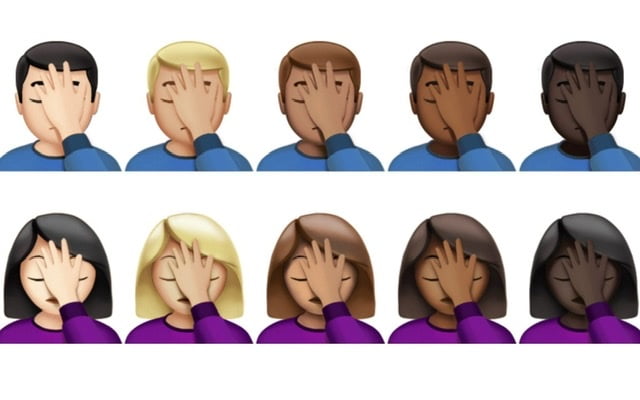
By Chand Bellur – September 14, 2020 at 6:43 p.m
- Displays with 120Hz refresh rates offer fluid motion and look more realistic than more common 60Hz displays.
- Reliable Apple analyst Ming-Chi Kuo claims Apple will not offer 120Hz refresh rates on any iPhone 12 model.
- Kuo estimates next year’s 2021 iPhone lineup will include at least one 120Hz refresh rate device.
- Several Android smartphones, such as the Samsung Galaxy S20 series and OnePlus 8 Pro, offer 120Hz refresh rates on devices costing less than most iPhone models.
What is a 120Hz Refresh Rate?
The screen is one of the most critical features of a smartphone. It’s your window into the digital world, providing visual information and user interaction, simultaneously. Although there are many other essential aspects of a modern smartphone, the best devices feature cutting edge display technology.
Fast refresh rates are the new frontier of screen tech. A refresh rate refers to the speed at which graphics regenerate — essentially how many video frames display in a second. A 60Hz refresh rate can, at most, show 60 frames per second (fps). At 120Hz, videos and apps can provide 120 fps, which makes motion look smoother.
The technology is not superfluous or frivolous. It has practical applications. If you’re a fast reader, you can quickly skim through an article while scrolling, without text blurring from the motion. In fact, it looks so real, it feels more like looking at reality than a video display.
Of course, games and videos seem more realistic on a 120Hz display. Although the high refresh rate looks best if apps and media support it natively, some Android devices offer motion smoothing technology. The software can simulate 120 fps content with 60 or fewer frames per second by generating more frames. The result is smoother motion for videos and games, even if media or apps don’t support 120 fps.
I got my hands on a Samsung Galaxy S20 with a 120Hz display. After using it for a few days, devices that run at 60Hz seem antiquated. Once you try 120Hz, you won’t want to go back. Unfortunately, iPhone fans won’t be able to enjoy 120Hz screens until at least next year.
iPhone 12 Will Not Feature 120Hz Display
Late summer is a feeding frenzy for Apple watchers and tech pundits. As its debut gets closer, iPhone rumors reach a fever pitch. Conjecture becomes substantiated and affirmed by leaks, as new iPhone test devices make it into the wild, for the sake of quality control.
Hopes for a new, improved screen in the iPhone 12 lineup evaporated, when notable and reliable Apple analyst, Ming-Chi Kuo, predicted that the technology wouldn’t be available until 2021. This sets Apple 2-3 years behind Android smartphone manufacturers like Samsung and OnePlus.
It’s unclear why Apple made this decision. Although supposed test models with 120Hz capabilities are in the wild, these dubious claims lack substance. Photoshop and simple UI mockups enable desperate tech pundits to enjoy greater revenues. There’s no compelling evidence that Apple was even testing 120Hz screens in the field.
Jon Prosser’s YouTube video, featuring a supposed iPhone 12 prototype, seems to be fabricated. Turning on 120Hz in the Settings app mockup doesn’t change the scan lines in the video. If this purported iPhone 12 prototype truly offered 120Hz refresh rates, you’d see different scan lines after the switch. They stay the same. It would appear the Settings app is just a mockup, and the video is a cheap ploy to gain viewers. The video is shot in the dark so no one can even see the iPhone 12, because it isn’t one. It’s another fake tech rumor, all for the sake of profit.
Battery power and component supply issues are the most likely reasons Apple postponed 120Hz refresh rates until next year. High-end iPad Pro models feature this technology; however, Apple produces fewer of these units. Apple does have experience with 120Hz displays, indicating other reasons for its absence on this year’s iPhone models.
Well substantiated rumors suggest that the iPhone 12 will likely sport a slightly weaker battery than its predecessor. The move seems to indicate that efficiencies in software and hardware components require less power. Using a lower capacity battery, Apple cuts corners and increases profitability. After all, Apple stock is their most important product.
120Hz refresh rates use significantly more power than 60Hz displays. Apple wouldn’t decrease battery capacity if it intended to use 120Hz displays. This casts further doubt on claims of iPhone 12 test units featuring 120Hz displays.
A few tech pundits took advantage of a rumor and fabricated evidence of a test unit with 120Hz capabilities. This was never an option for Apple’s upcoming phones. With diminished battery capacity, the iPhone 12 design eliminated any prospect for a significantly better display.
No, the iPhone 12 Won’t Support 90Hz Refresh Rates Either
The technology driving 120Hz refresh rates is expensive in two ways. It costs more and uses more computing power to implement a fast refresh rate.
Although Apple tries to make consumers believe they only offer the highest quality products, this is not true with screens. The best screen technology is costly, and Apple has a large family to feed. Most iPhone customers don’t care or know about screen refresh rates.
As mentioned, the new iPhone 12 models will feature batteries with less capacity than their predecessors. 120Hz displays use a lot of power. The devices offering this technology have much larger batteries than the iPhone. They also allow users more customization options, enabling them to switch to lower refresh rates easily.
Manufacturers like OnePlus have found a middle ground, offering 90Hz refresh rates on upper-mid level devices. Compromising between 60Hz and 120Hz, the smartphone maker can use slightly cheaper components and a lower capacity battery, passing savings off to the consumer.
Rumors suggest that Apple won’t adopt a middle ground strategy. This year’s models will feature the more standard 60Hz refresh rate, as Apple postpones the upgrade until the next cycle.
What Happened to Apple?
Something is rotten in Cupertino. As Apple grows, its ability to innovate, react, and adapt to new technologies and macroeconomic conditions decreases. Organizational theory supports the idea that large corporations are slow and latent.
Once again, new iPhone models will arrive, absent of technology that many Android users enjoy. The phones, priced well above their value, seem to attract fewer customers every cycle.
Although Apple sells the most popular smartphone globally, if you add up sales of different Samsung models, the Korean conglomerate sells more phones. Samsung enjoys a 20% global smartphone market share, compared to Apple’s respectable 14%. By offering several different models, it’s difficult for any one Samsung phone to dominate the world. Added together, it’s clear that Samsung is the largest global smartphone manufacturer.
Apple bulls expect the next iPhone launch to spawn an upgrade supercycle. With 5G network support, they feel users will upgrade to new iPhones.
Several Android devices already support 5G networking and feature 120Hz displays, which Apple won’t have until 2021. Remarkably, analysts believe iPhone consumers are rational actors who will upgrade based on 5G networking capabilities.
If iPhone buyers were rational, they would purchase Android devices. People buy the iPhone because it’s trendy, partly due to Apple’s innovative and pervasive marketing. Herd psychology is another factor. People feel like they fit in, and they’re more hip and sophisticated if they sport an iPhone.
Ecosystem lock isn’t an issue. Research shows that the vast majority of iPhone owners use Windows PCs, not Macs. They can even watch Apple content purchases on their Windows machines. Most people use free or subscription apps, which are available and portable to Android.
In a sense, the iPhone is the generic, default option, much like a Windows PC. Android is the mavericks’ and aficionados’ choice and the favored device for lower-income and price-conscious consumers. There are also several successful mid-range Android devices.
Unlike Windows, iOS doesn’t dominate the market. It’s not even close. Android has a whopping 40% global market share compared to iOS’s 15%. It’s impressive that one company can gain so much traction; however, they can’t beat an ecosystem composed of hundreds of international corporations.
Other factors, such as Apple banning Fortnite and its developer, Epic Games, from the App Store, may have gamers thinking twice about the iPhone. Fortnite is currently the most popular game on the planet, yet iPhone users can no longer install it. If they already have it, they won’t be able to get updates. Coupled with Apple’s unwillingness to approve Google’s Stadia and Microsoft’s xCloud, gamers could defect to Android.
Although iPhones feature superior processors, high-end Android devices, offering 8 GB to 16 GB of RAM, allow complex games to run entirely in memory. The experience is buttery smooth and superior to the iPhone. With better screens in flagship Android devices and App Store policies limiting gaming options, some die-hard gamers may leave the iPhone entirely.
Apple may have an iPhone upgrade supercycle, depending on how much they can distort reality. Amid a sudden and severe recession, with millions of Americans lining up at food banks, many may choose to stick with the phone they already have. After all, it won’t be too different from Apple’s newest phones.


